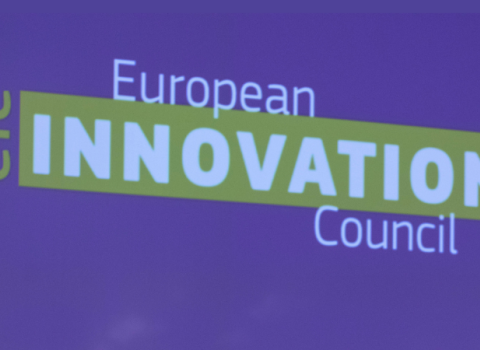
Image courtesy ORNL.
A force of 5,000 scientists and engineers, more than 4,600 patents available for licensing and a billion euro-worth of equipment for testing, prototyping and producing new micro and nano technologies: the newly-formed Heterogeneous Technology Alliance (HTA) between the Electronics and Information Technology Lab of the French Atomic Energy Commission (CEA-Leti) in Grenoble, the Fraunhofer Institutes in Germany, the Finnish Innovation Agency VTT, and the Swiss Centre for Electronics and Microtechnology (CSEM) in Neuchatel, begins life as an exceptional power house in the boiling field of microtechnology.
The HTA’s commercial arm, 4-Labs, based in Geneva, promises to encourage technology transfer beyond the national borders of the four members. It also stands out as a unique initiative, in that neither governments nor the institutions initiated this alliance. The initial spur came from the researchers themselves.
A new era of competition
“We are entering a new era,” explains André Perret, General Director of 4-Labs, “Our research is such that we have to overcome political obstacles in order to remain competitive in our field.” Micro- and nanotechnologies are finding an increasing number of applications across sectors such as materials, chemistry, food, energy and biotech. This means there is a need for more and more investment in equipment, as well as in expertise. “At a time when public funding is, and likely will be, decreasing, we recognise we can no longer do everything alone. Rather, we need to pool our competences,” said Perret.
A good example of that evolution is in silicon packaging. Whilst it is very good at micro-electronics and packaging at the wafer level, CEA Leti is now counting on Fraunhofer expertise in packaging systems on chips. The same logic applies to micro-captors, where VTT’s expertise is in thick structures, while that of CEA Leti is in thin structures.
“The alliance will also help us to identify critical new process equipment that we can share,” says Hughes Metras, Deputy Director of CEA Leti.
Pooling expertise and abandoning research in certain fields, in favour of relying on the expertise of third parties, is a challenge for institutions that are held up as cornerstones of national competitiveness in their respective countries.
CEA Leti, for example, is one of the forces behind the Franco-Italian semiconductor manufacturer STMicroelectronics, while the relationship between Fraunhofer, chip manufacturer Infineon and the German automotive industry is long-established and fruitful. Meanwhile, VTT has a special relationship with Nokia, and CSEM is an influential technology provider for Swiss watchmakers and the country’s medical technology sector.
“We hope to be able to recycle certain of our technologies within that network of partners,” says Perret. For example, the know-how of CSEM in low consumption chips, of VTT in electronic polymers, Fraunhofer in silicon packaging and Leti in electronic integration on large substrates, are all complementary skills.
The driving factor: friendship
Notably, the force that overcome national boundaries and the ‘not invented here’ syndrome was neither the scientific or economic rationale, nor political arm twisting, but friendship. In 2001, Jean Therme, Director of CEA Leti, became friends with Thomas Hinderling, Head of CSEM, prompting the French lab in Grenoble and its nearby counterpart in Neuchatel, Switzerland, to start sharing competences and debate strategy.
After this bilateral alliance had won some European grants for projects, the pair made advances towards Fraunhofer in 2006. “Soon after, VTT knocked at the door, and then we established the HTA alliance – which is still open [for further partners] even if for the moment we would rather consolidate than increase,” explains Perret
HTA hopes its critical mass will open the door to new project money. It has already been retained in 21 of the EU’s last 27 ICT calls. It will also participate in other European projects such as Eureka, and grand technology initiatives such as ENIAC, as well as national projects.
But overcoming national borders remains a challenge. In order to avoid political interference 4-Labs is not offering its services in the countries of its sponsor institutions, but is starting by exploring the market in the UK, Italy and Spain. “In our national markets, it will be the job of business development teams to coordinate our efforts and sell the expertise of each institution”, explains Metras.
On 4-Labs Perret adds, “We are focusing on SMEs and start-ups because most of the time they have development groups but lack the resources for applied research and prototyping. Those partners will have full ownership intellectual property that may derive from research conducted by HTA. But we hope the research will apply also in other industrial fields, where we may exploit the IP.”
The novel structure of HTA is triggering a lot of interest and providing a role model among other institutions. For example, CEA-Liten, a sister lab of Leti that specialises in new energy technologies, is exploring an alliance with TNO, the national organisation for applied research in Holland, in the field energy research.
Meanwhile, in the health sector Leti is looking for ways to build alliances with research hospitals within Europe. Others relationships may follow. It seems the bottom-up approach is well suited to the current environment.




 A unique international forum for public research organisations and companies to connect their external engagement with strategic interests around their R&D system.
A unique international forum for public research organisations and companies to connect their external engagement with strategic interests around their R&D system.